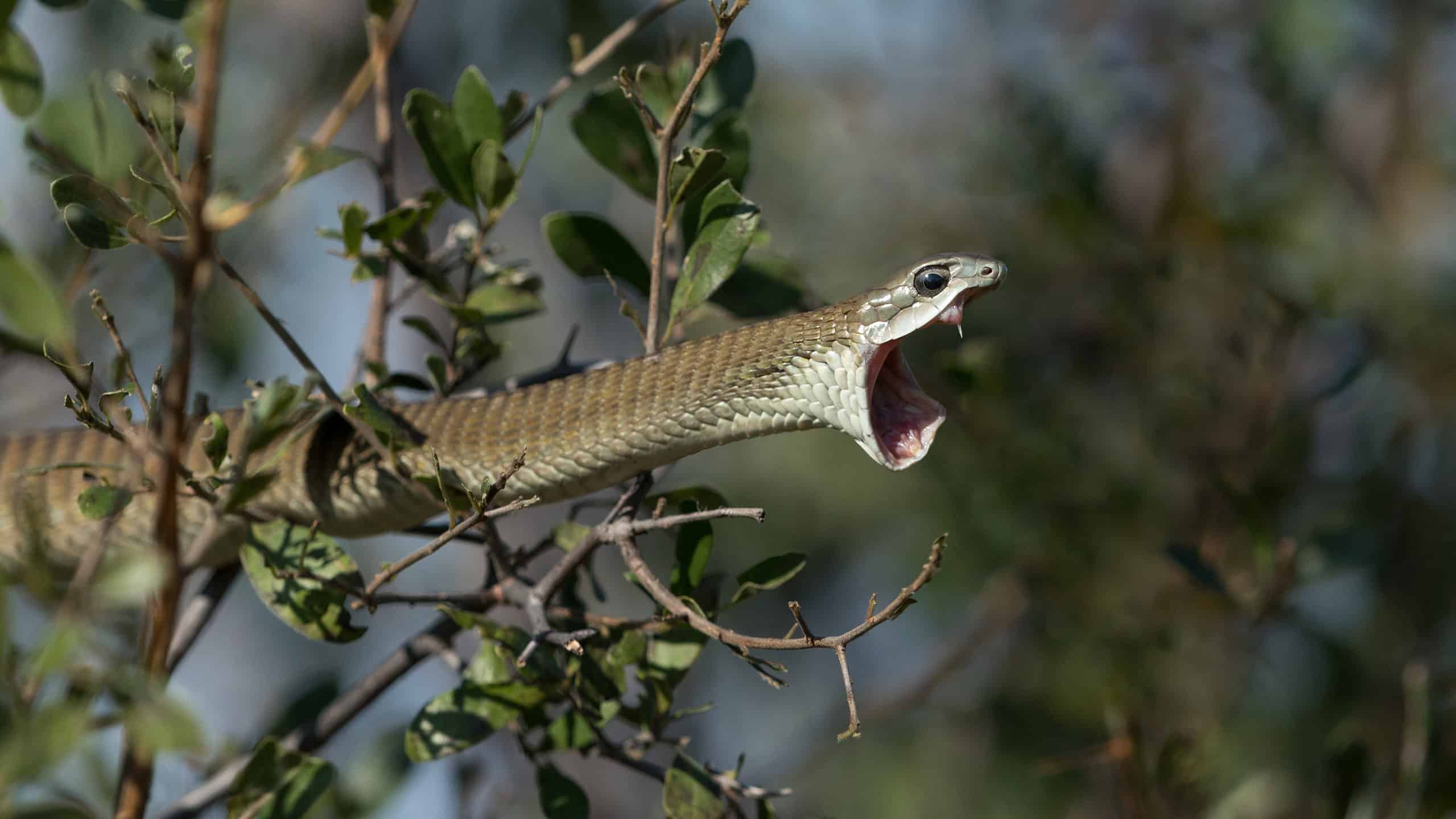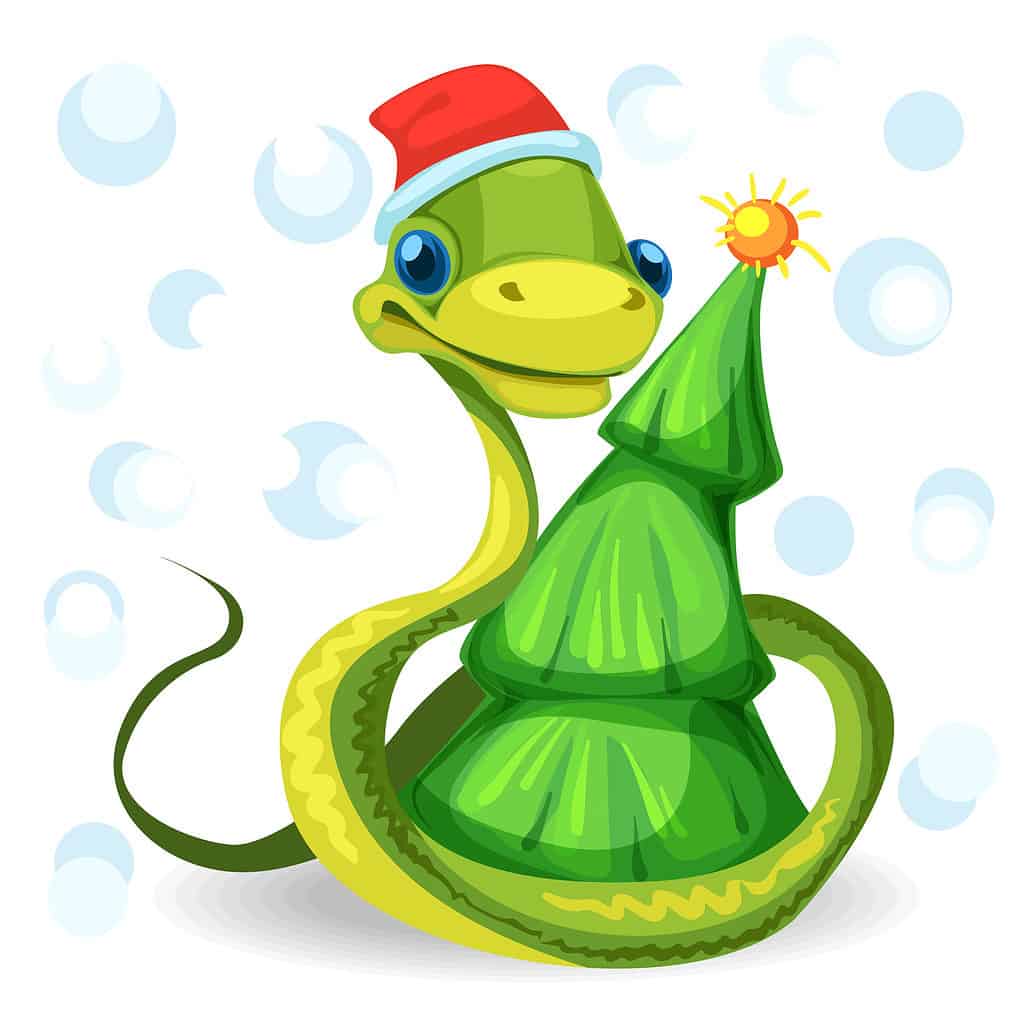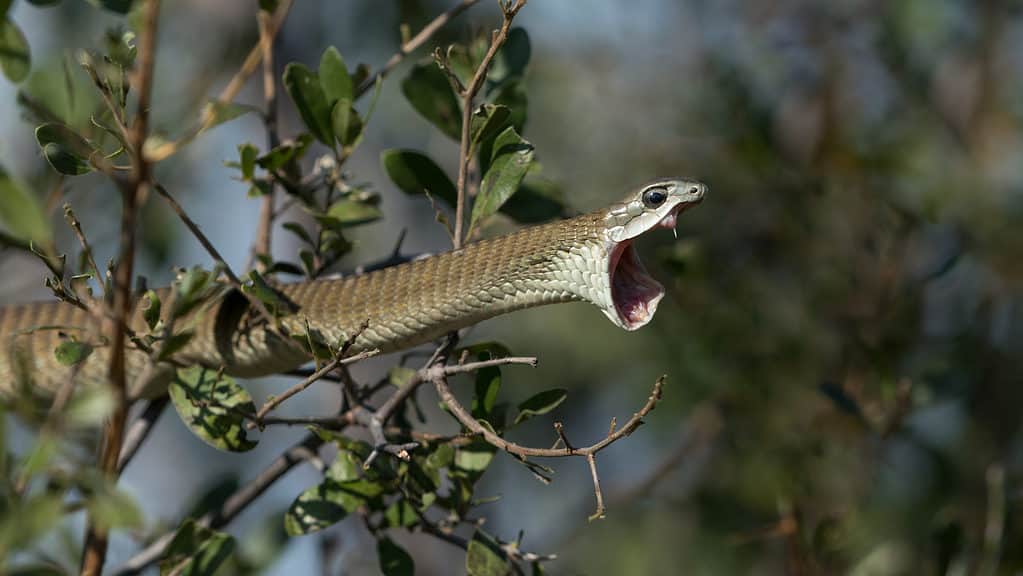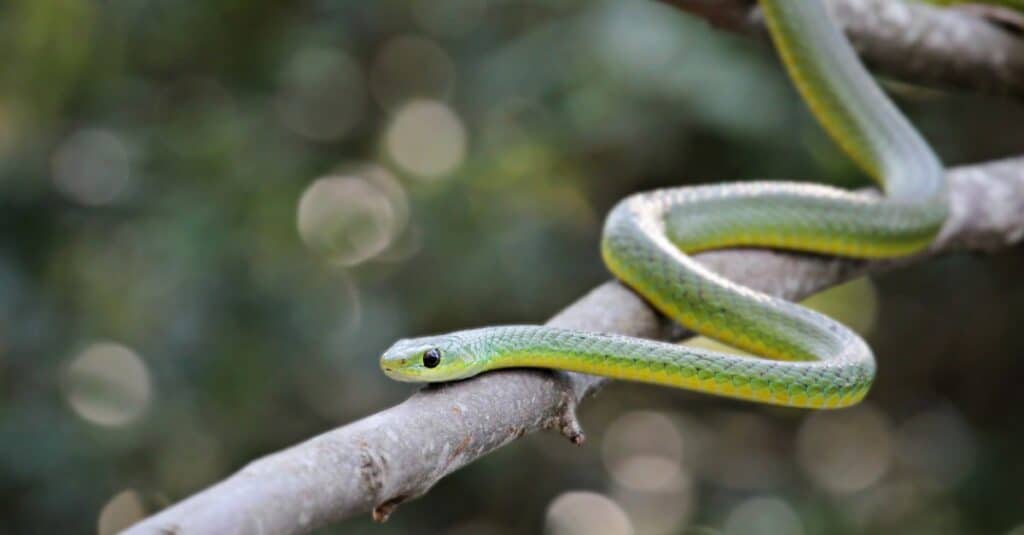Continue reading for our analysis...

Christmas is a time for magic, twinkling lights, delicious treats, and plenty of snuggled-up movie nights. It’s not the time for uninvited, sneaky, deadly reptiles to make their way into your beautifully decorated Christmas tree. This next video is a short clip from KHOU 11 news. The segment is aptly named “Critter News.”
The news reporter explains that this venomous snake, a female boomslang, was found in a home in South Africa. As she’s speaking, you see a photo of the snake sticking out of a Christmas tree. It seems fixated on something ahead and it’s surrounded by colorful decorations on the tree.
A male news reporter exclaims, “I mean, look at that thing!” The female reporter giggles as she goes on to explain what type of snake it is and that it is about four or five feet long. The video shows a second photo — this time of a man holding the snake with a special animal handling glove.
She continues explaining that this snake’s venom can be fatal to humans, even in small amounts. The video cuts to another photo of a man handling the snake with a snake tong. He has a focused look on his face as he keeps his eyes fixed on the snake’s head. He’s holding its tail with his left hand and positioning the snake tongs perfectly, just below the snake’s head.

This snake wrapped around a Christmas tree is a much more adorable depiction of what the South African family witnessed.
©krasivos/Shutterstock.com
The reporter says these are shy snakes that rarely bite. A snake expert is the one who recovered the boomslang. He explained that the snake was probably just looking for food, water, or shelter. It definitely wasn’t looking for presents with its name on them, even though it ended up where all the gifts were.
The snake expert eventually released the snake back into the wild. The video shows the two news reporters at the end and the woman laughs again, saying “I would have been like burn the house down!” They continue bantering with one another, commenting on the snake’s name — boomslang — which is pretty cool sounding. Although it rarely bites, you don’t want to be the once-in-a-blue-moon person who experiences that bite!

This female boomslang’s venom can be fatal to humans.
©Stu Porter/Shutterstock.com
The segment ends as the woman says, “I’m not trying to play chicken with a snake!” Certainly, that family wasn’t either. They acted quickly and appropriately, getting an expert snake handler to help with the removal and safe release of the boomslang back into the wild.
Is This Normal Behavior?
A snake in your indoor Christmas tree is the last decoration you would expect. But in reality, it is normal for small animals and reptiles to make their way into homes and buildings, especially in the colder months. Even in warmer months, they may be lured by the dark, cool spaces presented by a crack in the foundation or space beneath a door. Another temptation to venture inside is the possibility of a delicious meal. If you have mice or other small vermin venturing inside, there’s a good chance a snake may be nearby. Now, it is still bizarre for a snake to slither up a Christmas tree. Perhaps the snake was drawn to it since trees are found in her outdoor habitat.

Male boomslangs have a brown tint to their green bodies with black or blue outlines.
©iStock.com/FroeMic
Discover the "Monster" Snake 5X Bigger than an Anaconda
Every day A-Z Animals sends out some of the most incredible facts in the world from our free newsletter. Want to discover the 10 most beautiful snakes in the world, a "snake island" where you're never more than 3 feet from danger, or a "monster" snake 5X larger than an anaconda? Then sign up right now and you'll start receiving our daily newsletter absolutely free.
Thank you for reading! Have some feedback for us? Contact the AZ Animals editorial team.






